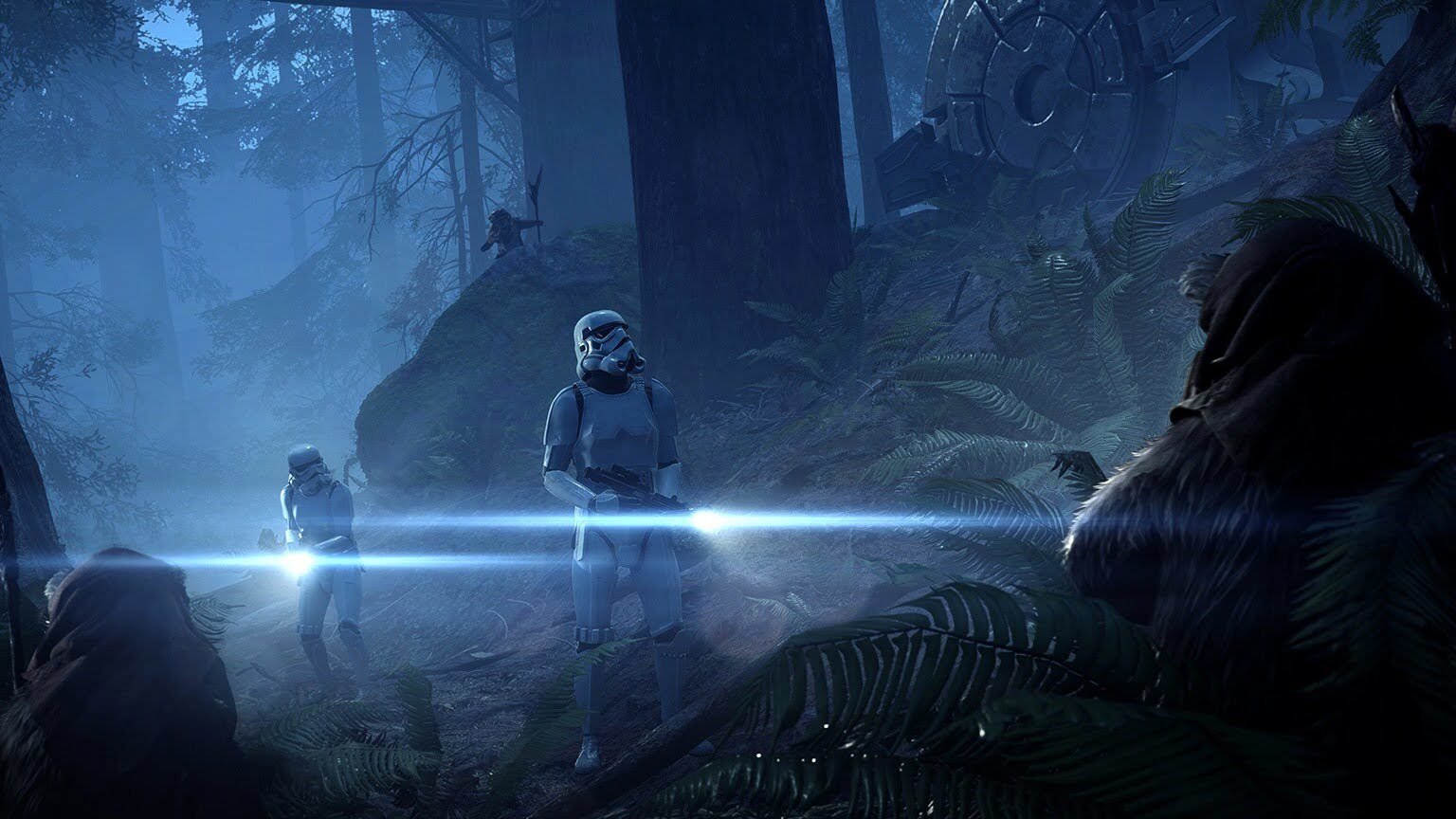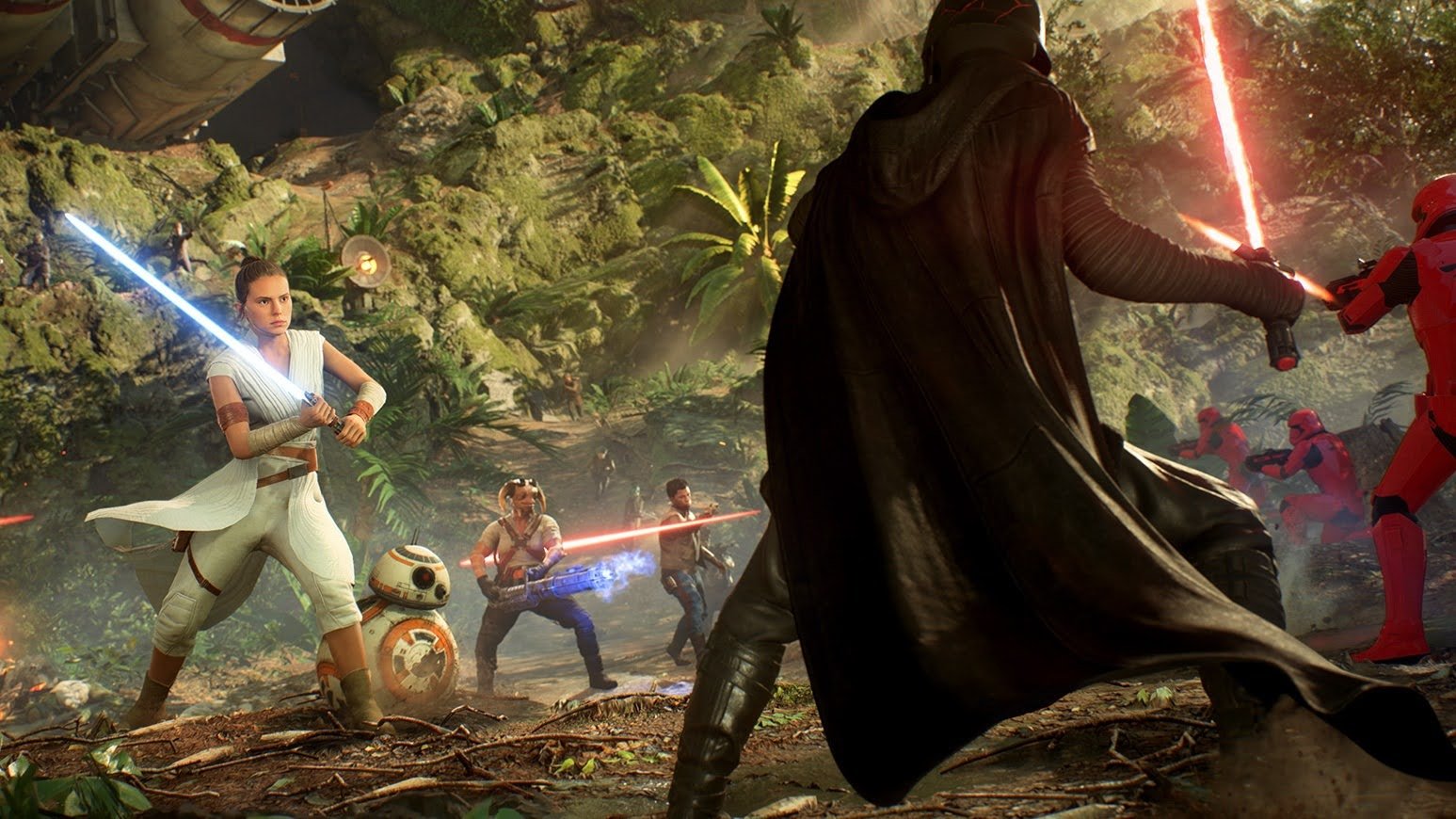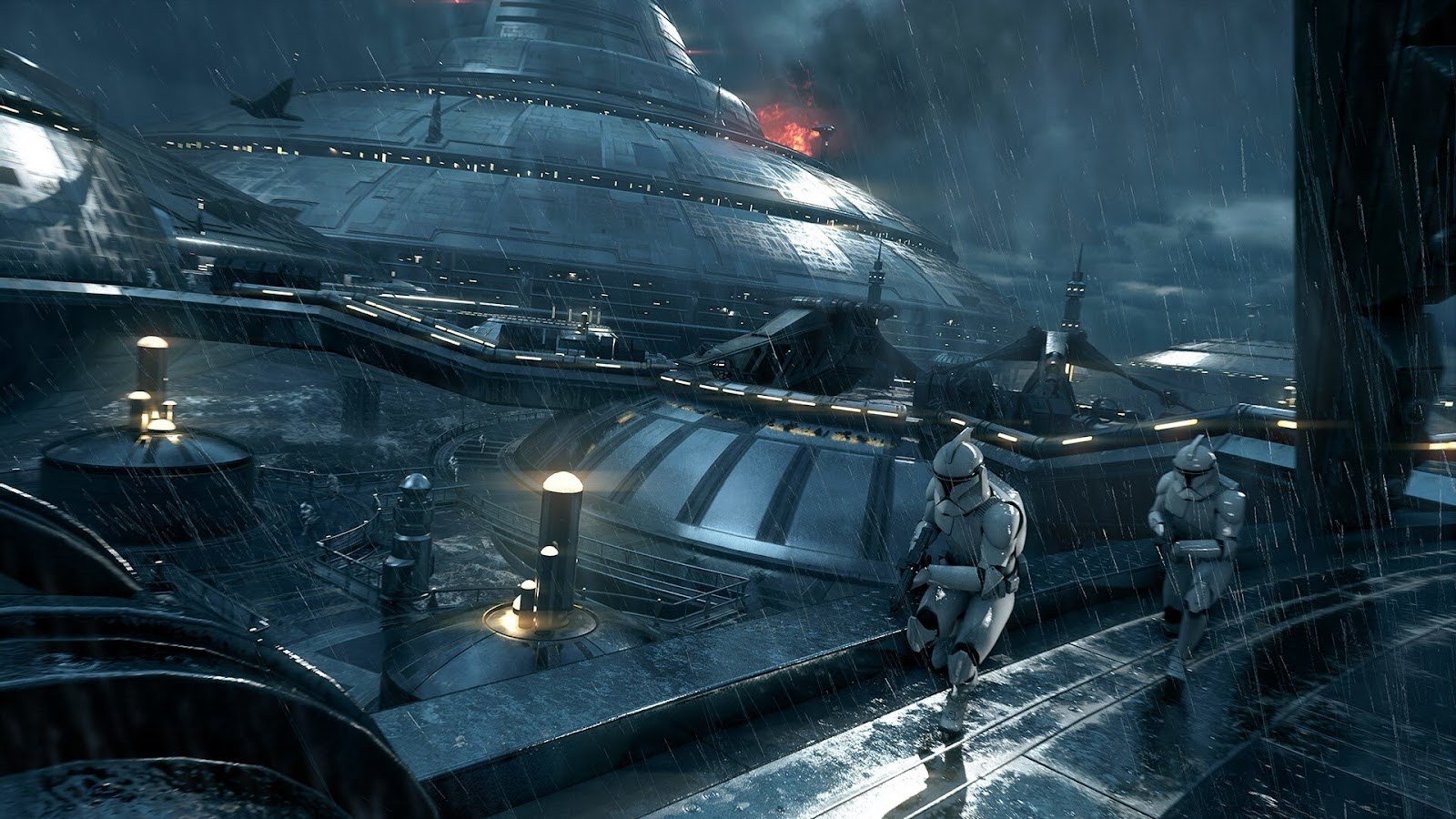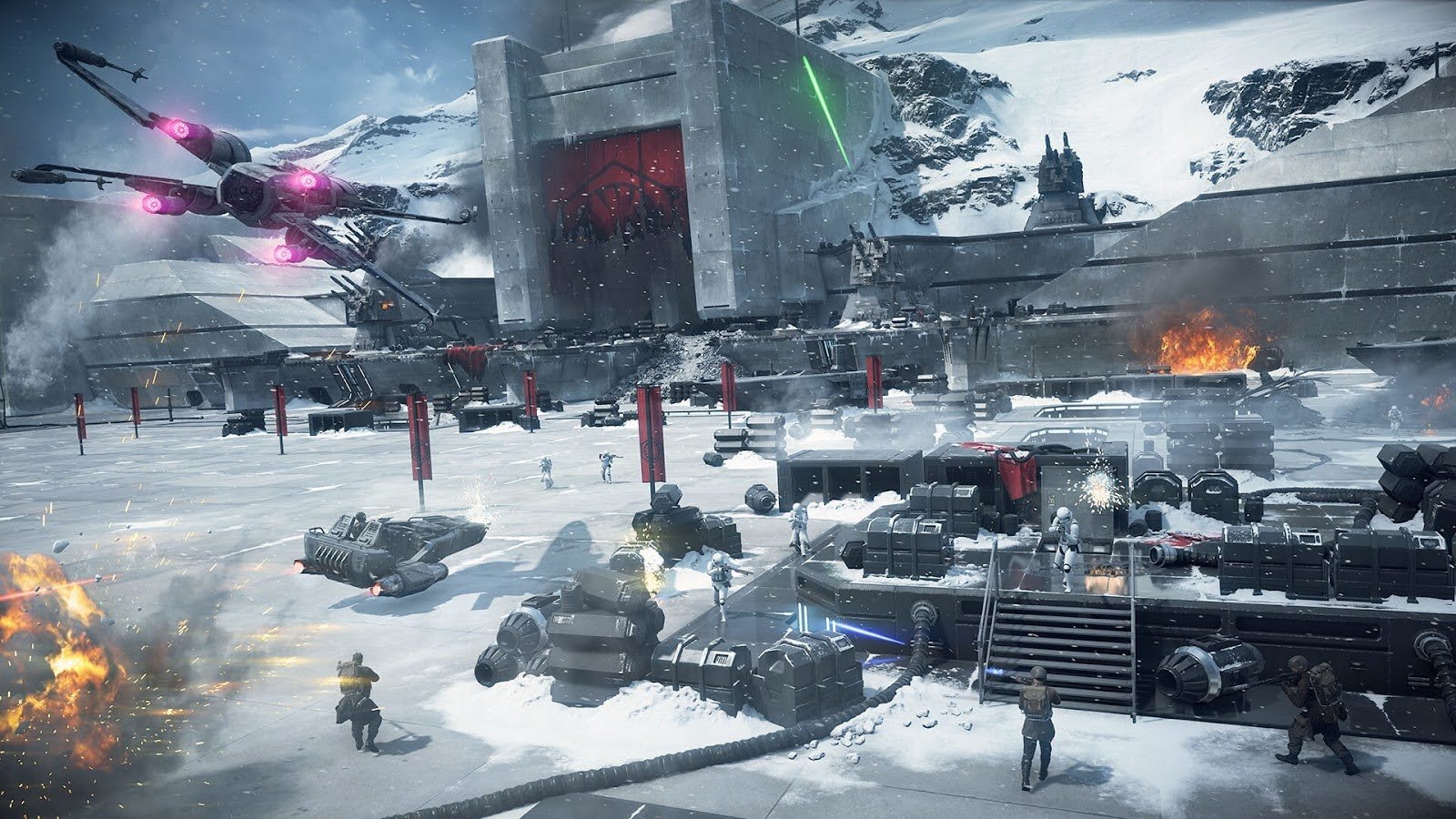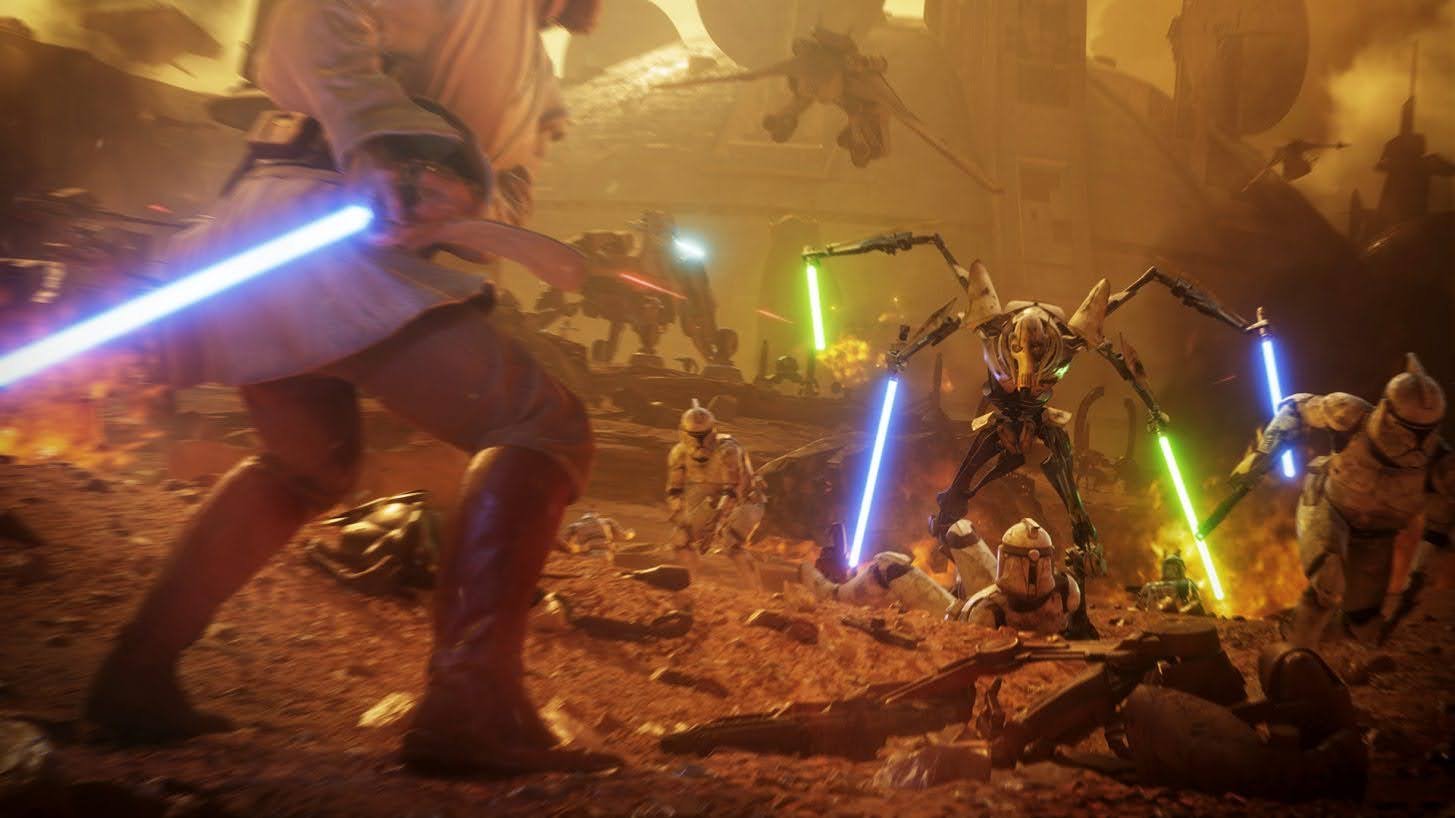DICE’s Star Wars Battlefront II Deserved Better
"Let's see what all the fuss is about," I muttered to myself as I kicked on my PlayStation on March 14, 2024, ready to boot up what many were heralding as the biggest Star Wars release of the year.
Despite my affinity for the medium, I've never been what I'd consider a gaming “historian.” I hold older classics in reverence as historical artifacts; I've watched them being played, and I know how they work and why they're revolutionary. But I've never played too many on my own—there's only so much money and time I can spend on gaming (especially as I get older), and more often than not, I tend to prioritize the new kid on the block. But as a Star Wars fan, when I heard that the Star Wars Battlefront: Classic Collection was coming out, I knew I had to get my hands on a copy.
Comprising Star Wars: Battlefront (2004) and sequel Star Wars: Battlefront II (2005), the Classic Collection was a re-release of two of the most beloved Star Wars videogames of all time, adapted for modern platforms. The games—acclaimed for being the first multiplayer shooters set in the Star Wars universe—had an incredibly straightforward and fun premise. You would fight in large-scale ground or space battles as a soldier (or spaceship) from a variety of Star Wars factions, attempting to capture command posts and kill off enemy armies. Some maps allowed you to hop in iconic Star Wars vehicles, like an AT-AT or a speeder bike, and if you'd racked up enough points in a certain match, you could also play as a "hero," a powerful character like Darth Vader or Obi-Wan Kenobi. The games had various online and offline modes based on the same general formula of "wipe out enemy forces and capture their land," with some spin-off variations to keep things fresh, and the sequel also featured a single-player story campaign. In short, it was like Call of Duty with stormtroopers and lightsabers, and everyone loved it. So when studio Aspyr announced plans to release the games on today's computers and consoles, they had all the momentum in the world. Star Wars fans couldn't wait to play this all-time classic series, especially those who had played the original games in 2004/05. It was a brilliant idea. The games already existed, Aspyr just had to update the tech and polish them a little bit, bringing them up to speed so you didn't need a twenty-year-old device to play.
All they needed to do was not fuck it up colossally.
As luck would have it, they fucked it up colossally.
There's not a lot of critical media analysis to be made as to why the relaunch was so terribly received; it was simply a technical disasterclass. Certain single-player features were unfinished, the multiplayer servers collapsed under the weight of a toothpick, and there were more bugs in the two games than the world's largest insectarium. Thoroughly frustrated with the inability to even get past the loading screen in the Classic Collection, I decided to get my Star Wars fix by hopping onto the other Battlefront.
The what?
You see, despite the smashing success of the series, there was never a third Battlefront game, for a variety of reasons, chief among them creative differences between developer Free Radical and publisher LucasArts. What we did get, 10 years later, was a complete franchise reboot developed by DICE and published by Electronic Arts—aka EA—with two games titled (not at all confusingly!) Star Wars Battlefront (2015) and Star Wars Battlefront II (2017). The newer games featured a couple minor changes, new mechanics in re: powerups, hero spawns, objectives, etc., but for the most part, retained the core formula of the originals. Run around, kill enemies, don't die.
I spent a considerable portion of my teenage years with DICE's Battlefront II. Now, in the wake of the Classic Collection and its unfruitful attempt at bringing the original Battlefront titles back into the public consciousness, I want to look at why the new Battlefront II's legacy—for better and worse—is so much more than just "the reboot." It's a tale of a game sunk into the trenches by corporate greed and brought back to life by developers' commitment to listen, learn, and do right by the fans.
* * *
Things did not start well for Battlefront II. In fact, they started about as bad as they could have.
The game was set to launch in November 2017, a month before the theatrical release of The Last Jedi, and so Star Wars mania had a vice grip on pop culture at the time. SWBF II was set to benefit greatly, and everything fans had seen about the game up until that point seemed incredibly promising. The visuals looked beautiful, the original campaign featuring new Star Wars character Iden Versio had a great hook, and players were particularly excited to dive into new multiplayer modes spanning all three eras of Star Wars, in contrast to the 2015 game, which had few gameplay variants and only featured locations and characters from the original Star Wars trilogy.
And in almost all of these areas (minus the story mode, which was somewhat lackluster), the game lived up to the hype. But less than 24 hours after the game launched in early access, all of that would go down the drain due to a monetization controversy so severe that it would eventually get Battlefront II investigated by multiple governments. No one was talking about how fun it was to have Yoda and Princess Leia team up to duel Kylo Ren and Boba Fett, nor how stunning the worlds of Kamino, Naboo, Crait, or Endor looked. The only thing on everyone's mind were the microtransactions (MTX).
Microtransactions, or in-game purchases for virtual goods or currency using real-world money, had been around in video games for about a decade. Their presence wasn't necessarily too hated, so long as they met two criteria for "acceptable" MTX. One; the only items you could spend real money on were skins or other cosmetics, which removed the crappy feeling of losing to someone not because they were more skillful, but because they dropped a couple hundred bucks to get better gameplay items. Two; the game itself was free-to-play, in which case the players understood that developers needed some way to make money.
Battlefront II met neither condition.
As such, it was rightly lambasted as being blatantly pay-to-win, an accusation that is ugly enough by itself, but even more so for a game that cost $60 to begin with. You had two options for unlocking new upgrades, characters, etc; you could grind it out and unlock them by playing the game for an obscene number of hours, or you could grab your wallet and pay another $80 to unlock them immediately. It's evident which one EA was trying to nudge you towards, and their public defense of their model wasn't helping. Their tone-deaf reply to one particular player's frustrations is now enshrined as the most-downvoted comment in Reddit history.
And it would be bad enough if that was everything wrong with the progression system. But it got much worse. You couldn't actually buy these items directly; you had to buy a "loot crate"—a sort of mystery box that could drop you anything from that powerful weapon you wanted to an emote that would make your stormtrooper dance. Loot crates are what really sent Battlefront II down the Sarlacc Pit. Hawaii Senator Chris Lee called the game a "Star Wars-themed online casino," and the Belgian Gaming Commission launched a full-fledged investigation into whether it should be banned for promoting gambling to children.
EA crumbled under the mounting pressure, and had developer DICE temporarily disable all crates and microtransactions upon public release while they evaluated their next move. They then proceeded to slowly distance themselves from the game, leaving more and more executive control and creative freedom in the hands of DICE. The developers, for their part, had a tall task ahead of them—picking up the pieces of the disaster that their publishers had orchestrated.
* * *
By the spring of 2018, DICE had mostly rebuilt the foundations of the game that had been burnt to ashes the prior winter. Loot crates now only contained cosmetic items, like alternate character appearances or emotes and voice lines, and they were not purchasable—only available to earn through mission rewards. If you really wanted a certain cosmetic item, you could buy it for real money, but the microtransactions ended there. All sorts of weapons, ships, characters, upgrades, etc. were now only unlockable via gameplay (and required a much more reasonable time commitment than at launch). They also committed to consistently communicating with fans about what was currently being worked on and what fans could expect next, which went a long way with an audience that felt like EA had spit in their face given how they initially defended their monetization choices.
But fixing the damage wasn't going to be enough, and they didn't stop there. Across the next two years, they continued to build upon the foundation they'd laid, winning back more and more players (and miraculously, good press) as they continued to add new content. Creative modes like the hide-and-seek-esque Ewok Hunt, new planets from the Solo and Rise of Skywalker movies, a massive Clone Wars expansion that added four new heroes and twenty new clone trooper skins, the new massive Supremacy mode that combined ground and air battles, Hero Showdown for sessions with smaller groups of friends, and much more.
It was evident DICE cared, whether the reason for that was reputation management, attempts to recoup the large investment that they'd put into the game, or—as the idealist in me would like to believe—a sincere desire for fans to enjoy a really cool multiplayer Star Wars experience.
The game still wasn't flawless. As previously mentioned, the story mode was decidedly mediocre, with predictable writing and a protagonist whose conflict felt too easily resolved, and the three epilogue chapters they added later didn't do much to fix that. On the multiplayer side—as with any competitive game—balance issues came and went throughout as certain troopers and heroes drifted between being overpowered to being unplayably weak. But these issues would, for the most part, be fixed based on player feedback, and the final product was a genuinely great game with tons of replayability.
On April 29, 2020, Battlefront II would receive its final content update, with leadership signing off saying there would be no new additions to the game after this one. Fans were devastated and confused—data leaks had confirmed that there was more unreleased content sitting around waiting to go live. There had also been little prior indication that the game was nearing the end of its lifespan, especially given the run of success it had all of 2019. Even the in-game content based on The Rise of Skywalker was well-received, despite that movie being widely regarded as a tremendous flop. The community was forced to say an early goodbye, although they found solace in knowing that, at the very least, if they weren't going to get any new stuff, at least they had two and a half years' worth of modes, maps, and characters to keep the game going. But a lot of that acceptance turned back to anger when it was revealed months later that EA pulled the plug on the game and reassigned a bunch of DICE staff working on Battlefront II live service to another game in another franchise that I will not dignify by naming.
That game ended up being a major flop—Battlefront II had died for nothing.
A most unceremonious finish to an admirable run.
* * *
To this day, I'm bitter about how it all went down with DICE's Battlefront II, and for all the teenage nostalgia it brings me, it also serves as a painful reminder of what could've been.
I'm not going to downplay the controversy it spurred at launch—chances are Battlefront II will still go down in history as "the loot crate game," which is its cross to bear. Once that bell was rung, it could never be unrung, and the game's praiseworthy revival does not erase the horrendous start that it had. But at the same time, the way the developers navigated the game out of the shitshow that it began as is a comeback story worth telling.
Seemingly every time DICE's Battlefront is talked about, you'll hear someone interject with how much better the original pre-reboot versions were. Maybe that's true. Someday if Aspyr can finally patch up the Classic Collection, I'd like to experience them myself. It evidently wouldn't be the first time a Battlefront game has clawed back from a (very) bumpy release. But for now, coming back to DICE's Battlefront II and seeing lobbies still filling up in seconds, modders still working around the clock to add new and wacky unofficial content, and YouTubers coming back to cover the game does make me smile.
It's a testament that as long as people care... no game is truly dead.
To see more of what I've been playing, check out my Playlist account.


